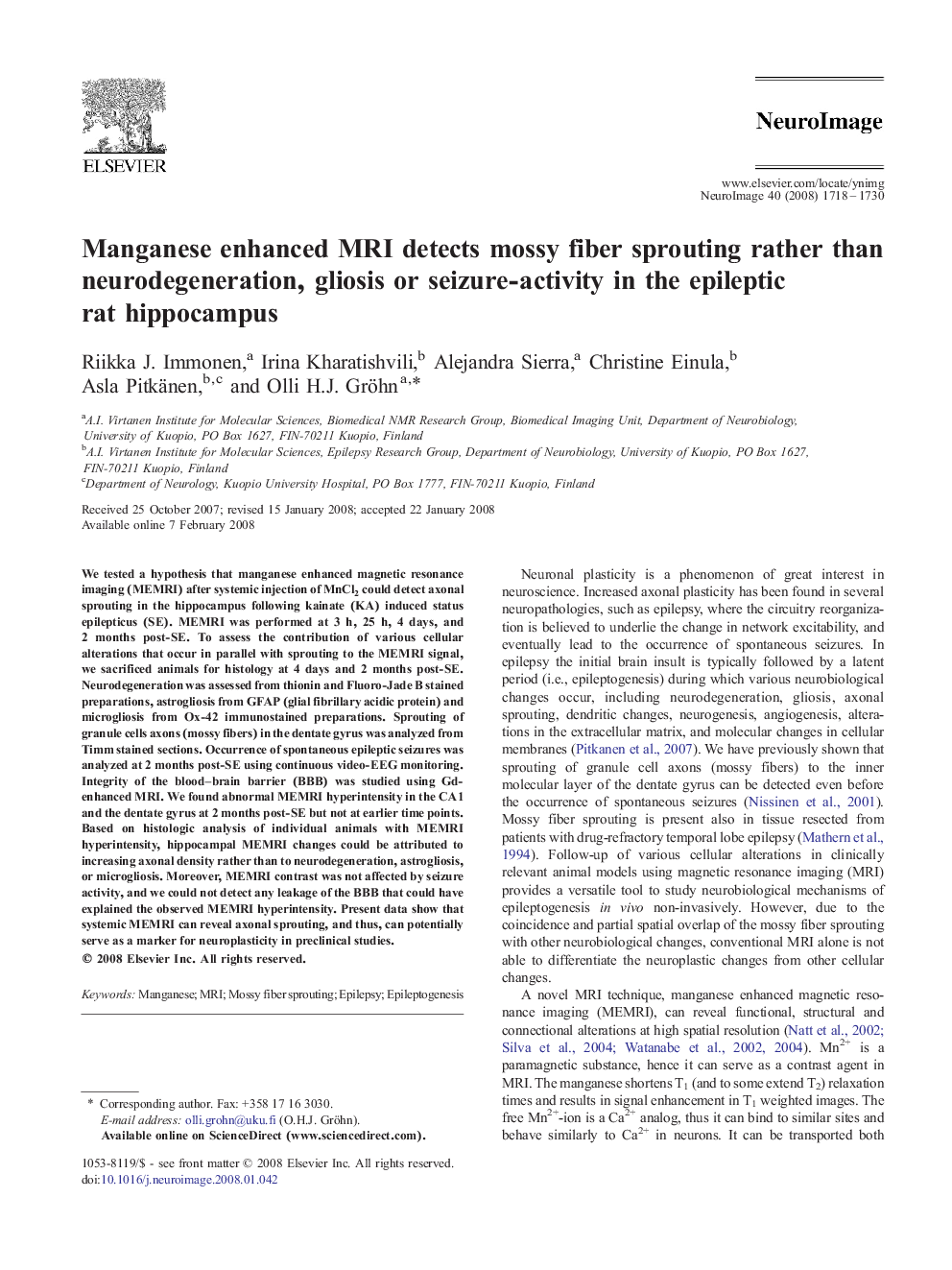| Article ID | Journal | Published Year | Pages | File Type |
|---|---|---|---|---|
| 6039558 | NeuroImage | 2008 | 13 Pages |
Abstract
We tested a hypothesis that manganese enhanced magnetic resonance imaging (MEMRI) after systemic injection of MnCl2 could detect axonal sprouting in the hippocampus following kainate (KA) induced status epilepticus (SE). MEMRI was performed at 3Â h, 25Â h, 4Â days, and 2Â months post-SE. To assess the contribution of various cellular alterations that occur in parallel with sprouting to the MEMRI signal, we sacrificed animals for histology at 4Â days and 2Â months post-SE. Neurodegeneration was assessed from thionin and Fluoro-Jade B stained preparations, astrogliosis from GFAP (glial fibrillary acidic protein) and microgliosis from Ox-42 immunostained preparations. Sprouting of granule cells axons (mossy fibers) in the dentate gyrus was analyzed from Timm stained sections. Occurrence of spontaneous epileptic seizures was analyzed at 2Â months post-SE using continuous video-EEG monitoring. Integrity of the blood-brain barrier (BBB) was studied using Gd-enhanced MRI. We found abnormal MEMRI hyperintensity in the CA1 and the dentate gyrus at 2Â months post-SE but not at earlier time points. Based on histologic analysis of individual animals with MEMRI hyperintensity, hippocampal MEMRI changes could be attributed to increasing axonal density rather than to neurodegeneration, astrogliosis, or microgliosis. Moreover, MEMRI contrast was not affected by seizure activity, and we could not detect any leakage of the BBB that could have explained the observed MEMRI hyperintensity. Present data show that systemic MEMRI can reveal axonal sprouting, and thus, can potentially serve as a marker for neuroplasticity in preclinical studies.
Related Topics
Life Sciences
Neuroscience
Cognitive Neuroscience
Authors
Riikka J. Immonen, Irina Kharatishvili, Alejandra Sierra, Christine Einula, Asla Pitkänen, Olli H.J. Gröhn,
